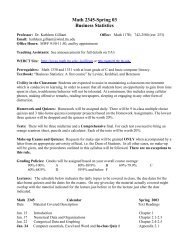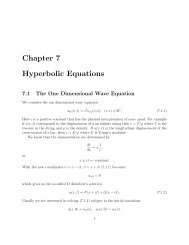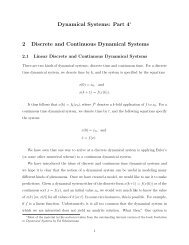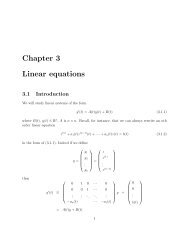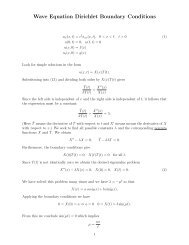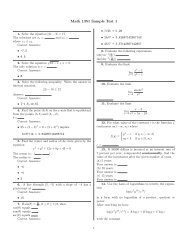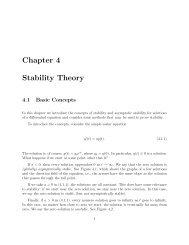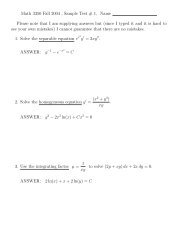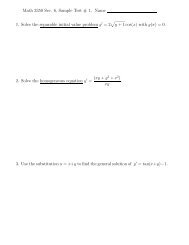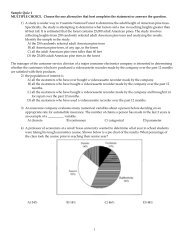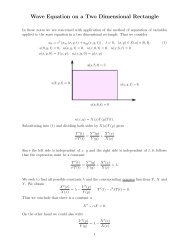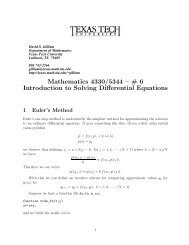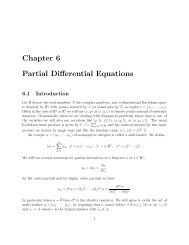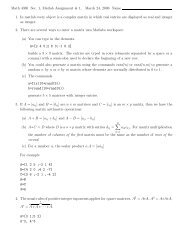6 Variational Methods
6 Variational Methods
6 Variational Methods
Create successful ePaper yourself
Turn your PDF publications into a flip-book with our unique Google optimized e-Paper software.
then at all points x = c where y 0 ′ is discontinuous (with a jump discontinuity), the Weierstrass-Erdmann Corner Conditions∣f y ′∣x=c −= f y ′and∣x=c +must be satisfied.(y ′ f y ′ − f) ∣ ∣x=c −=(y ′ f y ′ − f) ∣ ∣x=c +Functionals of Several Unknown Functions:Suppose we want to find the extremal of a functional of several unknown functionsJ =∫ baF (x, y 1 ,y ′ 1,y 2 ,y ′ 2, ··· ,y k ,y ′ k) dx. (6.1.10)We proceed to derive Euler equations by introducing functions η j and assume that y ∗ j are extremalfunctions. Then we introduce the admissible functions y j = y ∗ j + α j η j , j =1, 2, ··· ,k where α jare scalar. We require that∣∂J ∣∣∣αj=0, j =1, 2, ··· ,k, for all functions η j .∂α j =0This gives us the system of k Euler-Lagrange equations∂F− d∂y j dx∂F∂y ′ j=0, j =1, 2, ··· ,k.Functionals with Higher Order Derivatives:Suppose we wish to minimize (or maximize) a functional involving higher order derivatives.Consider, for example,J =∫ bHere we suppose that the values ofaF(x, y, dy)dx , d2 ydx ··· , dk ydx. (6.1.11)2 dx ky, dydx , d2 ydx 2 ··· , d(k−1) ydx (k−1)are specified at x = a and x = b. Again we introduce admissible functionsy = y ∗ + αη,12



